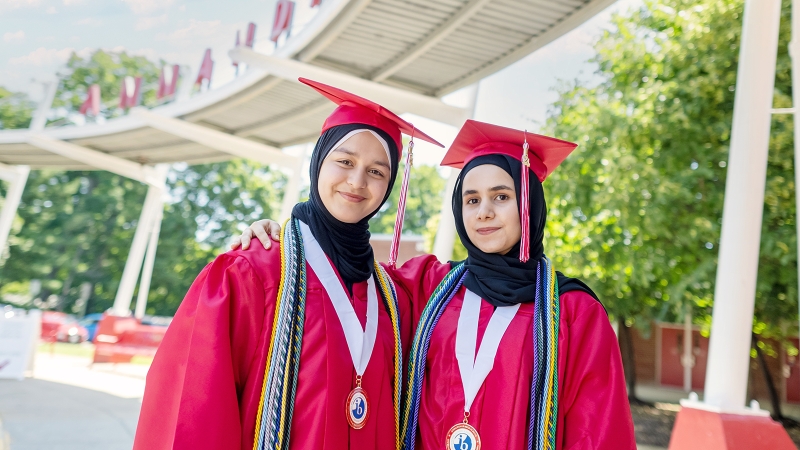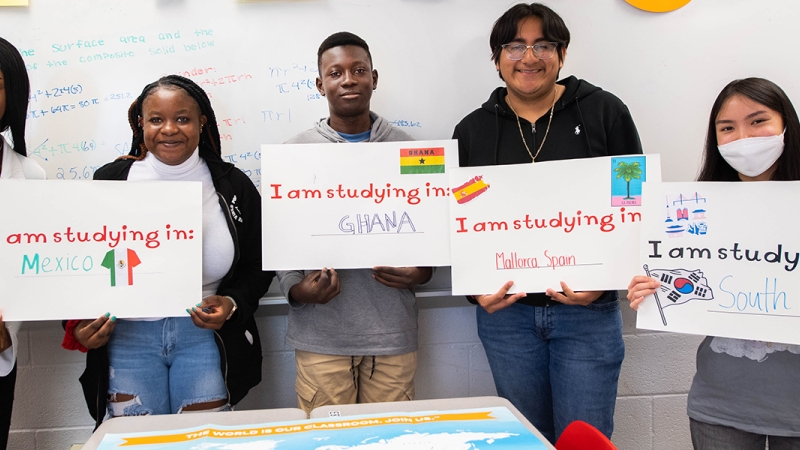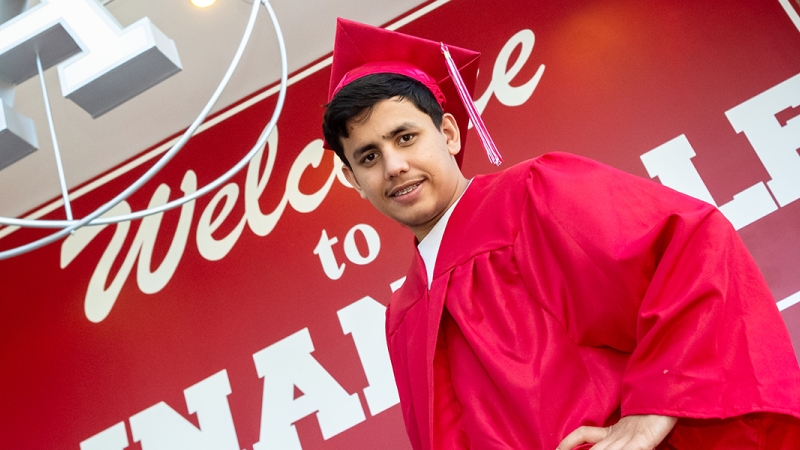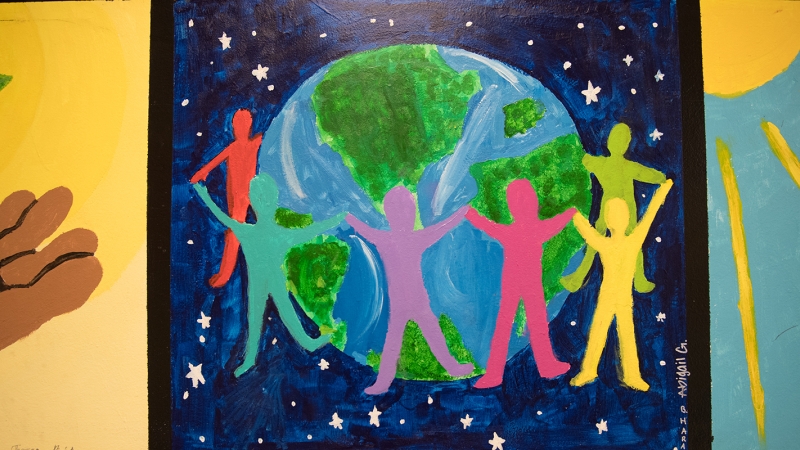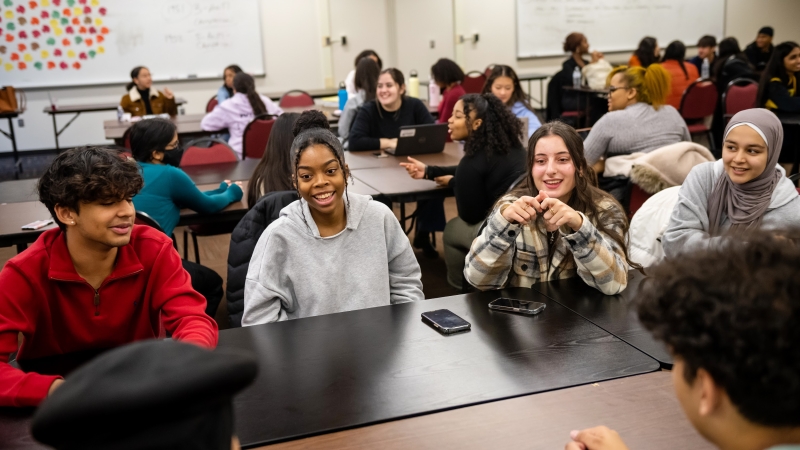
Fairfax County Schools, Students Open Doors and Arms to Afghan Refugees
Sosan Barakzai, who moved to Fairfax County from Afghanistan at the end of fifth grade, has a lot to share with the six Afghan refugee students who have enrolled at Annandale High School since the year began.
Sosan, now a 15-year-old sophomore at Annandale High herself, wants the newcomers to understand that many of their AHS peers themselves at one point were in English language learner classes. She also wants them to know that it’s ok to ask questions -- of teachers and other students alike, and that Skittles and Sour Patch Kids meet Halal food standards while most American gummy bears and gummy worms don’t -- but she knows where to find gummy candy that is compliant with Islamic dietary guidelines.
“I feel like I know better than anybody how it feels,” says Sosan, who left Afghanistan when she was 10-years-old and immediately enrolled in Bren Mar Park Elementary in Alexandria for her final few months of fifth grade. She says she was unfamiliar with going to school alongside boys, since most Afghan schools were segregated by sex, impressed by American classrooms since many of hers in Afghanistan had broken windows and encouraged by teachers who pushed her to participate even as she was not yet fluent in English. “Everything is different about school here. Some of it was quite shocking to me, but I never felt uncomfortable.”
The six refugee students at Annandale High are just a fraction of the more than 80 Afghan students who have enrolled at Fairfax County Public Schools across the district since U.S. troops pulled out of Afghanistan, and planes carrying hundreds of refugee families landed at nearby Dulles Airport. Many refugee families found temporary shelter at Northern Virginia Community College in Annandale, and some made the decision to remain in Fairfax County permanently.
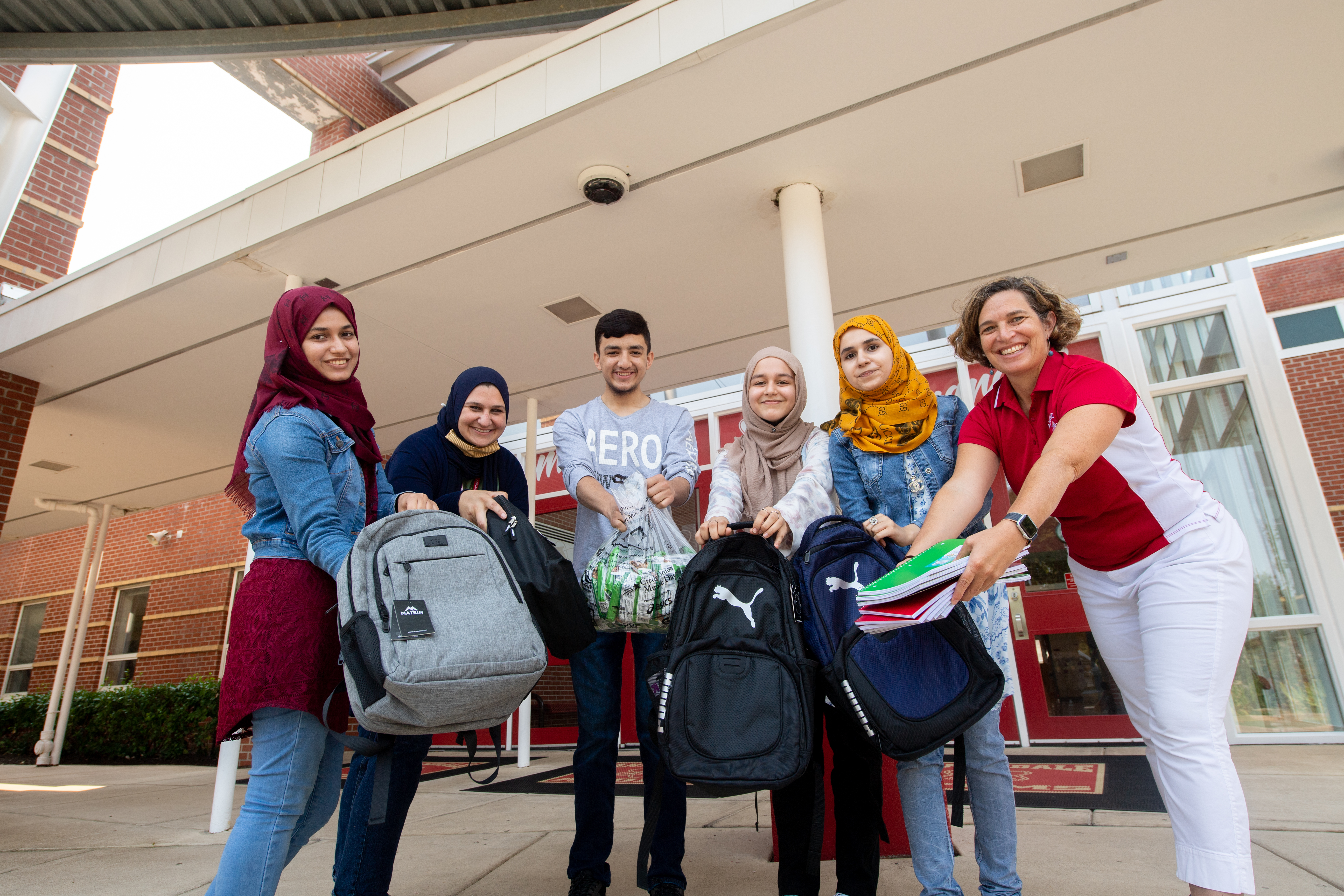
Schools across the district are adjusting accordingly. Parklawn Elementary in Alexandria has enrolled at least 19 Afghan students over the past three weeks, more than any other FCPS school, according to district data.
Parklawn Principal Rebecca Forgy says her staff is prepared to serve the new students, whatever their needs may be.
“We have a strong student support team,” Forgy says, adding that counselors, the Parklawn family liaison, psychologist, and social worker gather at least every other week to discuss newcomer needs.
Parklawn staff themselves have previously received trauma-based instruction training and will utilize that, as well as guidance from school psychologists, on the unique needs of refugee students, she added.
Staff members direct families to a free clinic to help parents who may be uninsured address medical issues, a family liaison welcomes every family individually and can share resources for assistance with food, clothing, school supplies as needed, and counselors are devising a plan to do “minute meetings” or short, regular check-ins as well as lunch bunches with students as they adjust, Forgy said.
Parklawn is placing the refugee students in classes where they may be another Afghan student already or at least another child who speaks the same language, Forgy said. Ninety-six of the school’s roughly 800 students were born in Afghanistan, so many refugee families are drawn to the area either through family or community ties, she says.
“We see children holding the hands of the new students walking to the playgrounds, it is really heart-warming,” Forgy said. “Honestly, our children are so welcoming and familiar with diversity already, I am not sure they have the sense that anybody is standing out, it is just another new person joining us.”
Ahsanullah Luddin, a junior at Annandale High who came to the U.S. from Afghanistan roughly 18 months ago himself, remembers who was there for him when he first started school. There were teachers who called him sweetheart and checked in on him at home -- “they were very motherly to me and I appreciated that” -- Ahsanullah says, noting that behavior is very different from the typical Afghan teacher-student relationship.
There were also students who went out of their way to bridge the gap for him, he says.
“They showed me how to do assignments, turn things in and how to even find my classes,” Ahsanullah says. He remembers one student in particular, a neighbor who was a senior at the time of his move, who would come to his family’s house, to do homework together side by side for three or four hours a night to help him understand how to meet American classroom expectations.
Annandale High leaders say that is their goal. Ahsanullah, Sosan, and Khujasta and Husna Basiri, sisters who enrolled at Annandale after moving from Afghanistan last year, are working on a guide for staff on how best to help the newest refugee students acclimate.
“The minute someone walks through our door, we aim to have someone who escorts them, hopefully can communicate with them in their home language and makes them feel welcomed,” Principal Shawn DeRose says.
“Annandale, given our diversity, given our location, we seem to be a microcosm of anything that is happening in the world,” DeRose says. “There are obviously academic needs, language needs that we are prepared to address, but also so many students who come to us may have experienced some significant trauma, so we are trying to meet their social-emotional and wellness needs as well.”
